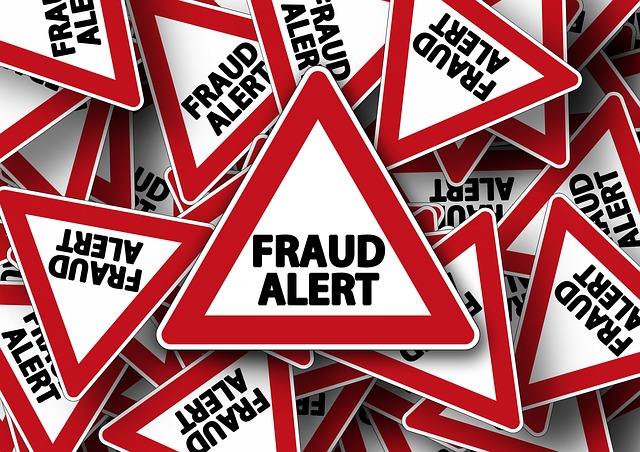Widgetized Section
Go to Admin » Appearance » Widgets » and move Gabfire Widget: Social into that MastheadOverlay zone
Facial Recognition Software Thwarts Government Fraud
The views expressed are those of the author and do not necessarily reflect the views of ASPA as an organization.
By Chelsea Binns
November 17, 2015
Emerging technologies are making it easier to detect fraudsters. One such technological advancement is facial recognition software. This technology identifies faces via a “science of sophisticated mathematical representations and matching processes.”
According to recent reports, several government entities are using this software to fight fraud, including intelligence, law enforcement, motor vehicle and welfare agencies. The software uses speed and precision in detecting criminals. Per the New York Times,
“The software can identify 16,000 points on a person’s face — to determine the distance between the eyes or the shape of the lips, for instance — and compare them with thousands of similar points in police booking or other photos at a rate of more than 1 million faces a second.”
Facial recognition technology is a recent phenomenon. The FBI launched its “Next Generation Identification System” in September 2014. By 2015, it was expected to house “51 million photographs” and “produce results on more than 55,000 photo searches every day.” The FBI plans to share this database, making it “accessible to more than 18,000 local, state, federal and international law enforcement agencies.”
Today, law enforcement is already using facial recognition technology on smartphones and iPads to catch criminals. According to a recent New York Times article, San Diego is “at the forefront” of this technology. New York and Chicago are also avid users, having “linked it to 25,000 surveillance cameras in an effort to fight street crime.”
In San Diego, law enforcement has identified criminal suspects upon receiving photographs from victims who managed to snap a photo of their assailant. In one case, the police were able to identify the perpetrator within 10 minutes due to facial recognition.

Facial recognition software is also preventing fraud at the department of motor vehicles (DMV). There, fraudsters attempt to obtain multiple identifications for nefarious purposes. Facial recognition software has successfully thwarted this fraud, by identifying persons via photograph who are already in the database.
Overall, per Stateline, “At least 39 states use [facial recognition] software in some fashion.” In some states, this technology is shared with law enforcement. The technology has reportedly achieved “remarkable” results. Agencies are also finding the technology allows them to fight fraud with less manpower.
New York has been using this technology in the DMV since 2010. Since then, DMV officials have identified 14,000 people fraudulently owning more than one driver’s license. New York and New Jersey have also partnered in a pilot project to share DMV information to prevent commercial fraud that crosses state lines.
In one New Jersey case, facial recognition technology identified a man who “[used] false identities to get two fraudulent commercial driver’s licenses to drive trucks. His licenses had been suspended 64 times, including six times for DUI convictions.”
In both states, other frauds have also been detected. Since 2011, New Jersey officials have referred about 2,500 such cases to law enforcement. In New York, a sanitation worker was found to be impersonating his dead twin brother for more than 20 years, collecting more than $500,000 in disability benefits.
While the impact on government fraud is notable, this technology is also expected to reduce fraud in other industries. For example, in a recent survey, financial industry experts said facial recognition software would play an important role in fraud prevention over the next three to five years.
Similarly, retailers have used facial recognition technology to fight fraud by identifying known shoplifters. The software is used to scan incoming shoppers’ faces and match them against a gallery of images of known wrongdoers. The scans are sent via a mobile app to loss prevention personnel within seconds, allowing for immediate security response.
The exact number of organizations using facial recognition technology is unknown. A recent Fortune article revealed that Wal-Mart once used a facial recognition system. According to FaceFirst, the provider of Wal-Mart’s software, their technology is used by “several Fortune 500 retailers,” although those users are not disclosed.
It is believed that some organizations do not publicize its use due to the controversy it has generated. Privacy advocates say the software can be intrusive as it scans the face of innocent people.
However, in most cases, it is not illegal. In some states, such as Illinois and Texas, “informed consent” is required. In Illinois, consumers have exercised their rights, filing class action lawsuits against Facebook and Shutterfly “for violating state law related to biometrics.”
At the federal level, “no federal privacy law expressly regulates commercial uses of facial recognition technology.” The Government Accountability Office also recognizes that “laws do not fully address key privacy issues stakeholders have raised, such as the circumstances under which the technology may be used to identify individuals or track their whereabouts and companions.”
Despite the controversy, it can be inferred that more organizations would use facial recognition technology if it were affordable. The FBI’s system reportedly cost $1 billion. Wal-Mart, who no longer uses the technology, told Fortune the technology “didn’t have the ROI, or return on investment” they were looking for.
Author: Chelsea Binns is an assistant professor in the department of criminal justice, legal studies and homeland security at St. John’s University in New York. She can be reached at [email protected].


Follow Us!